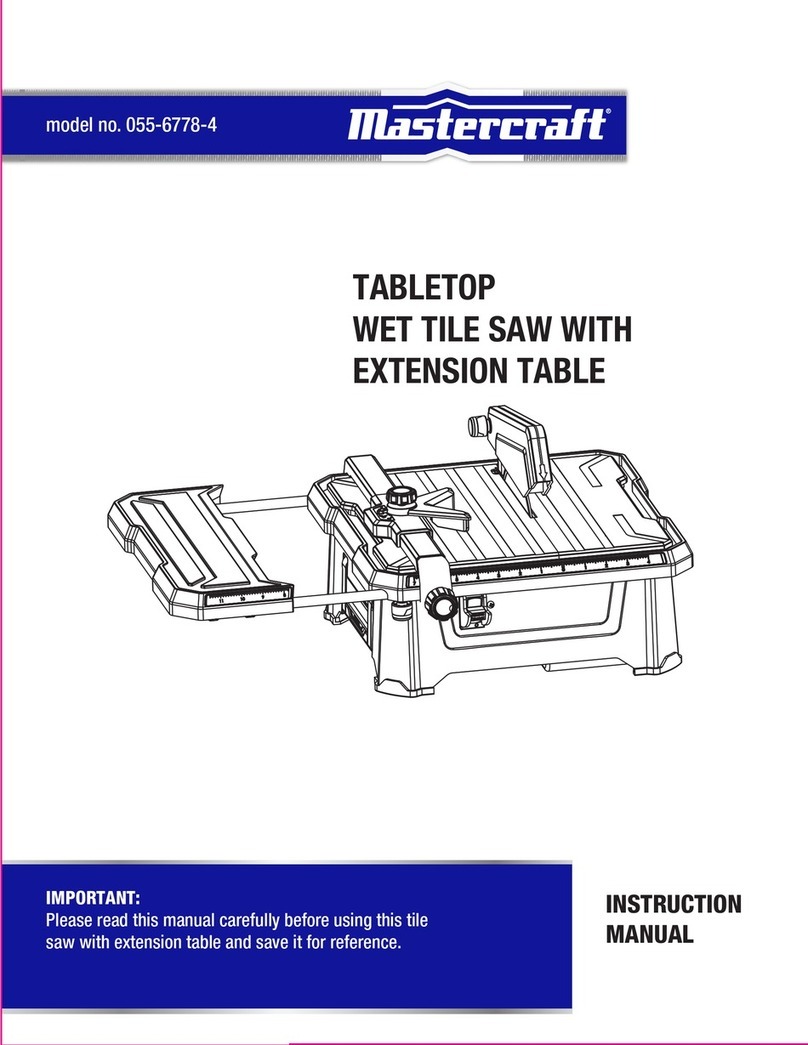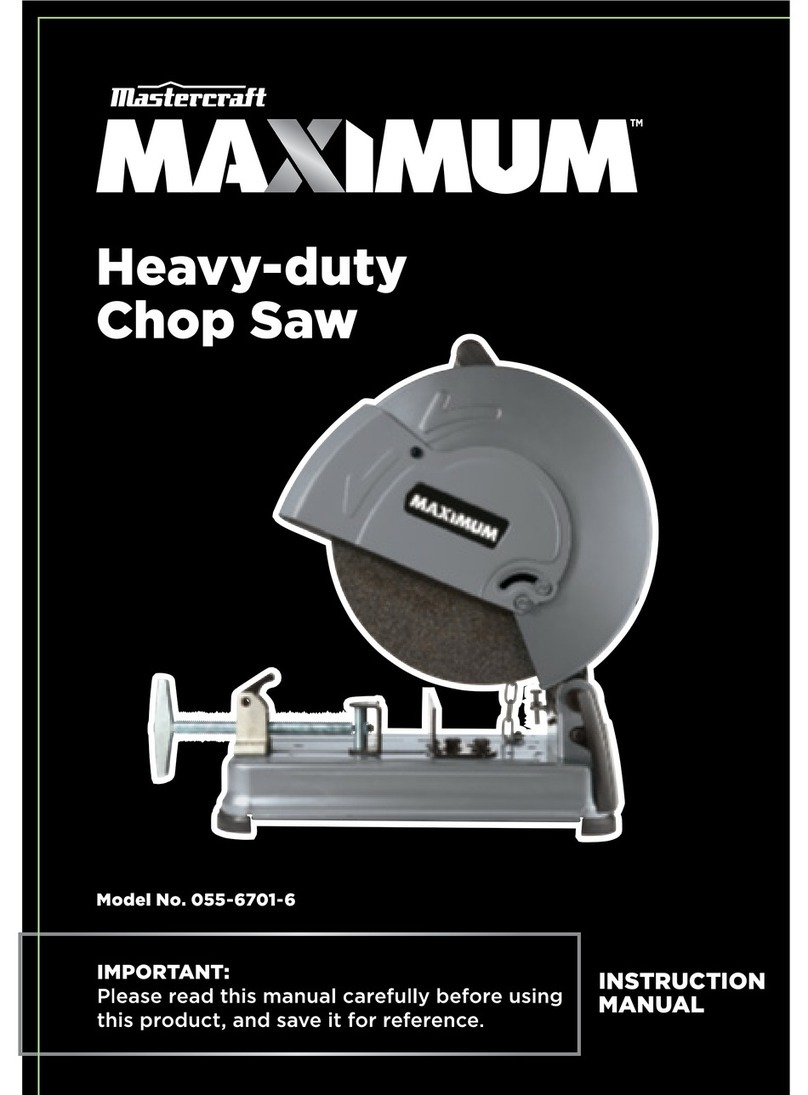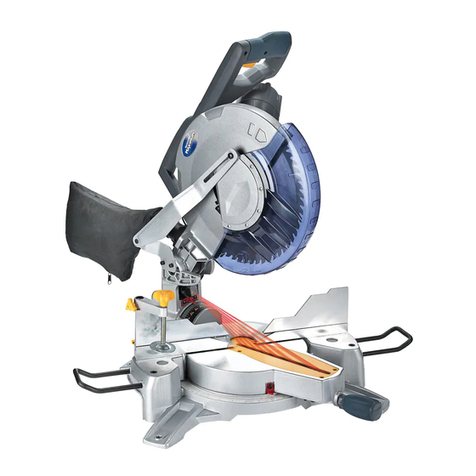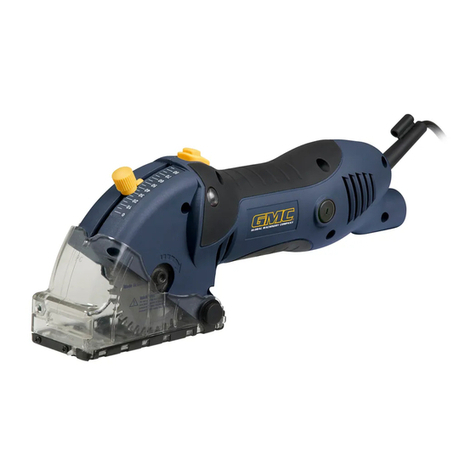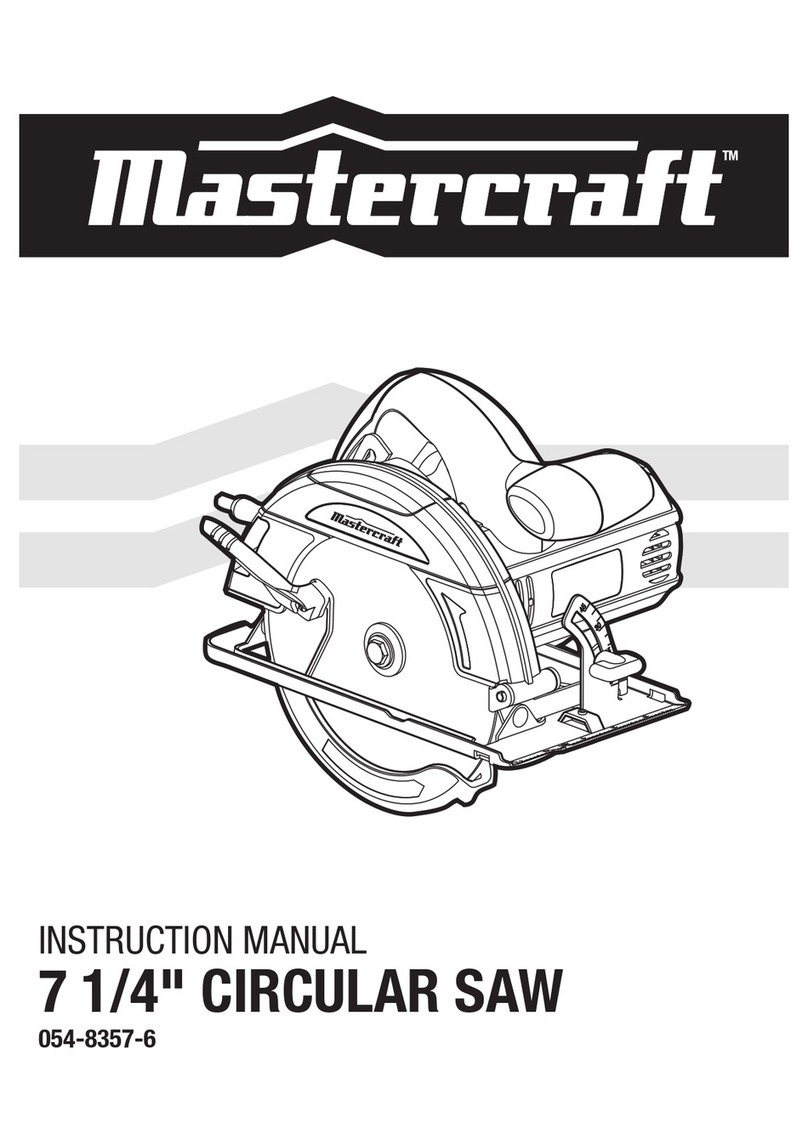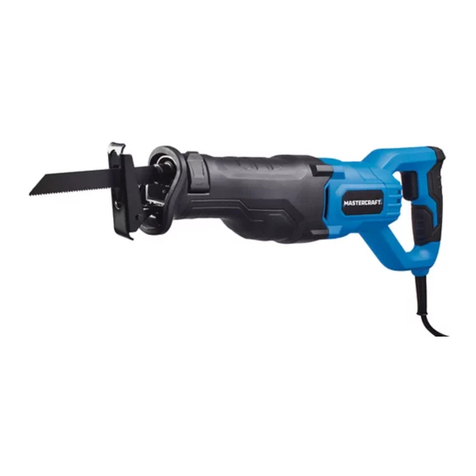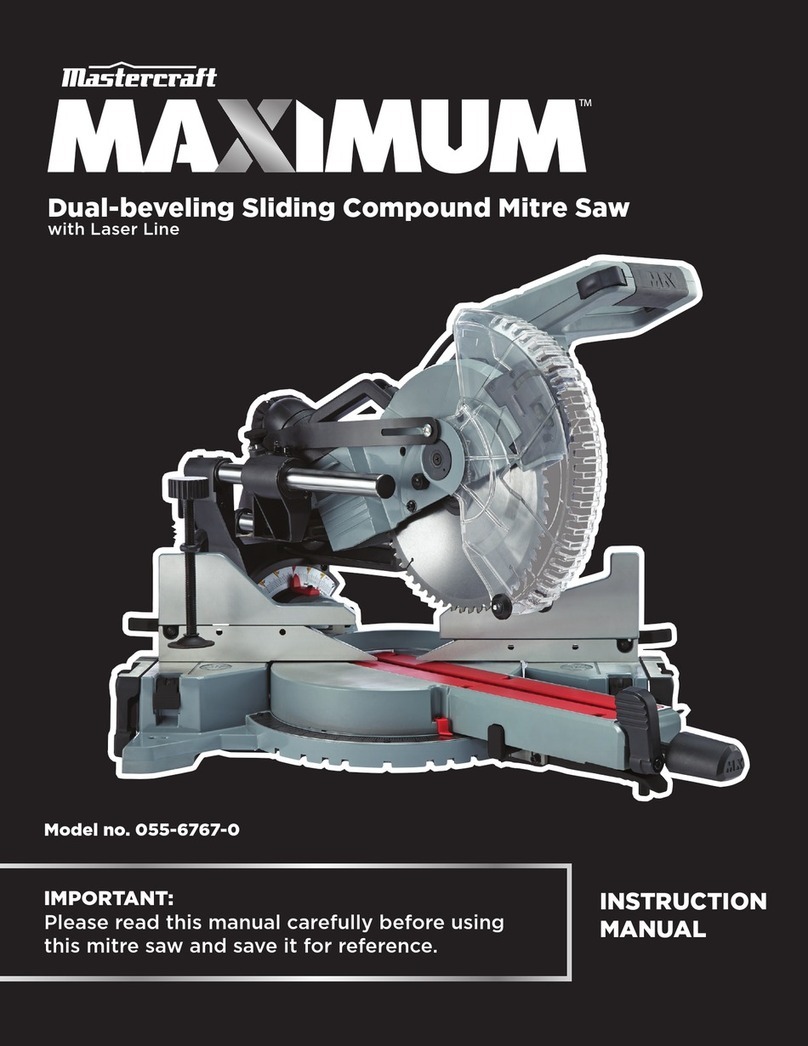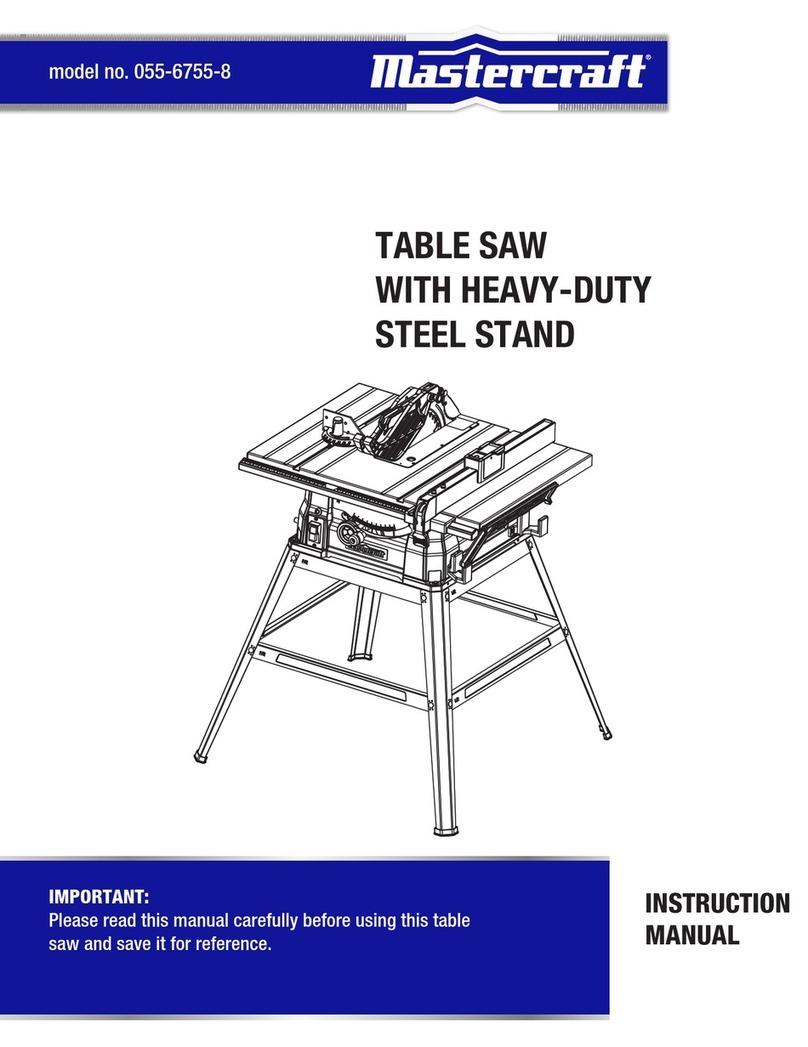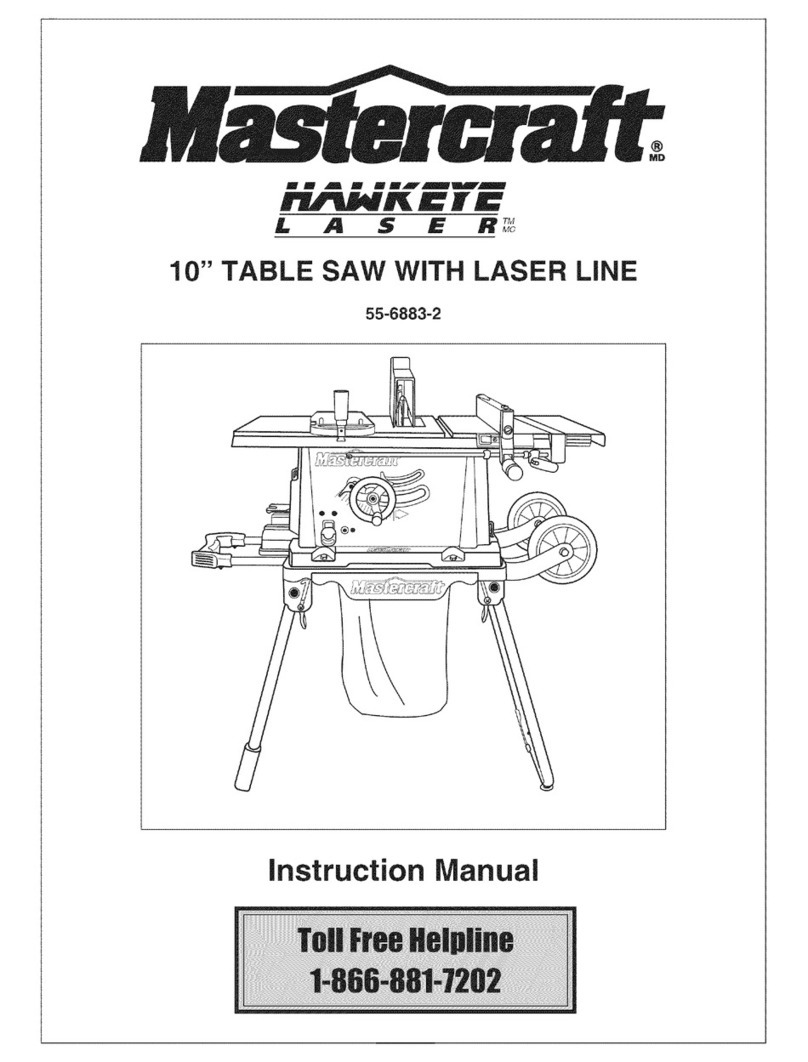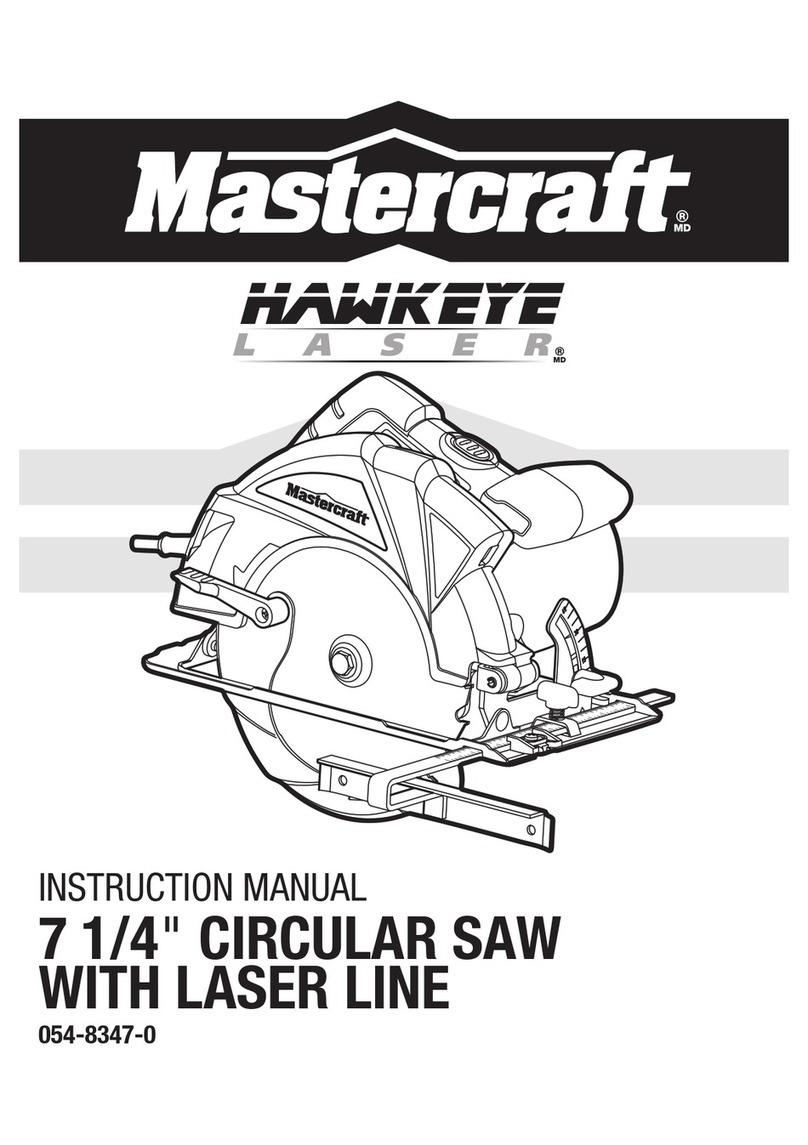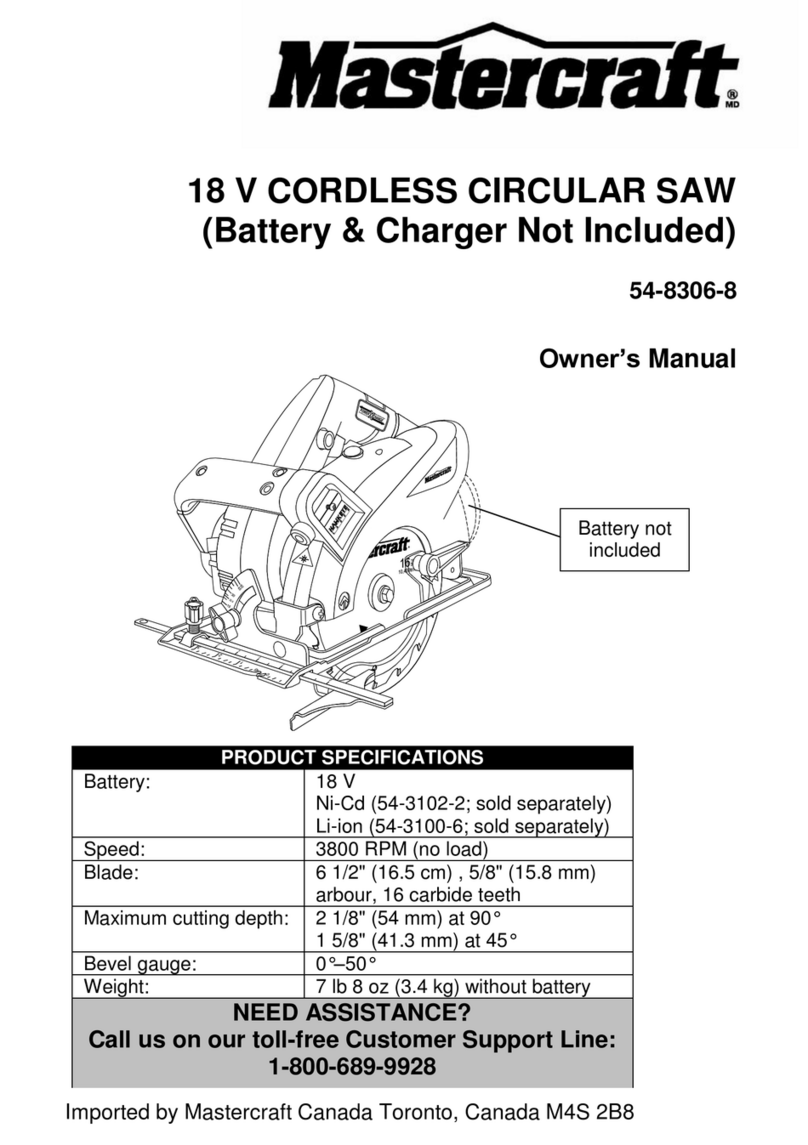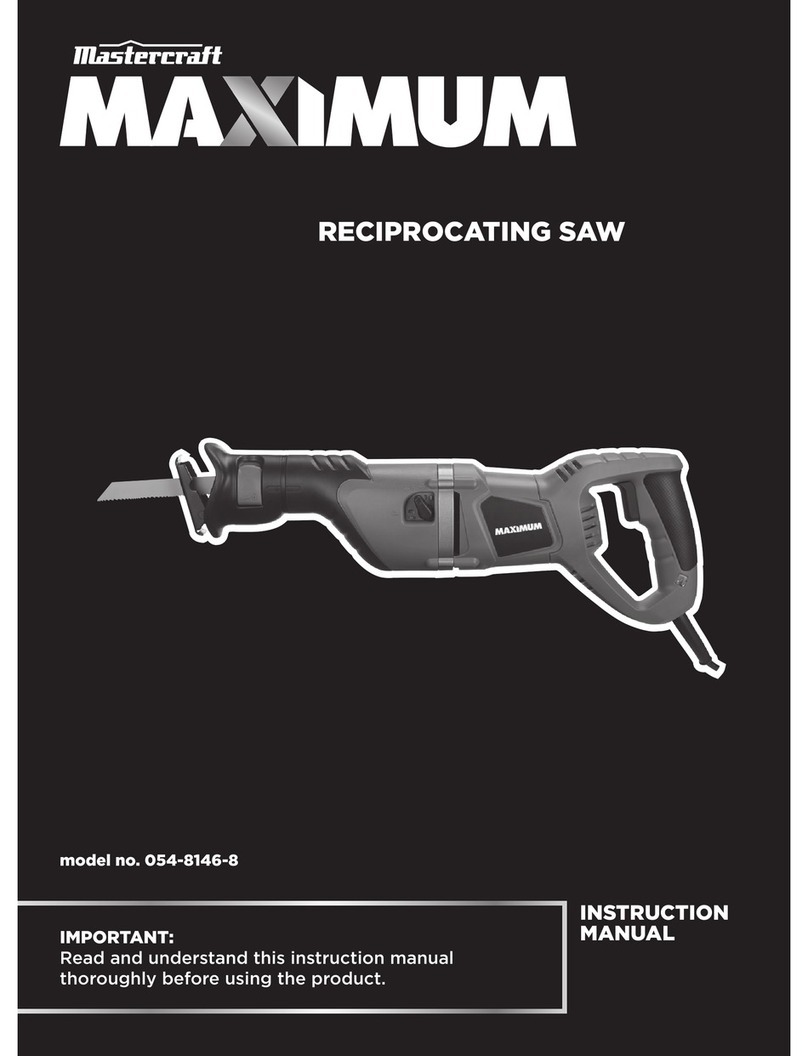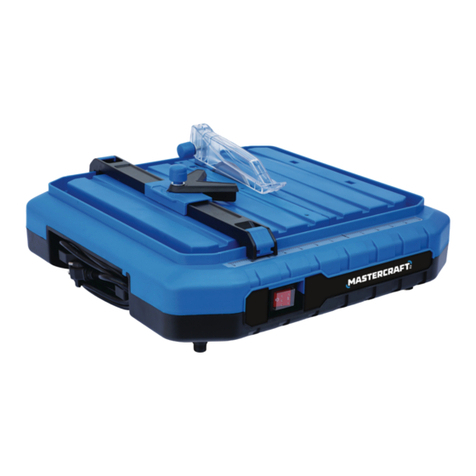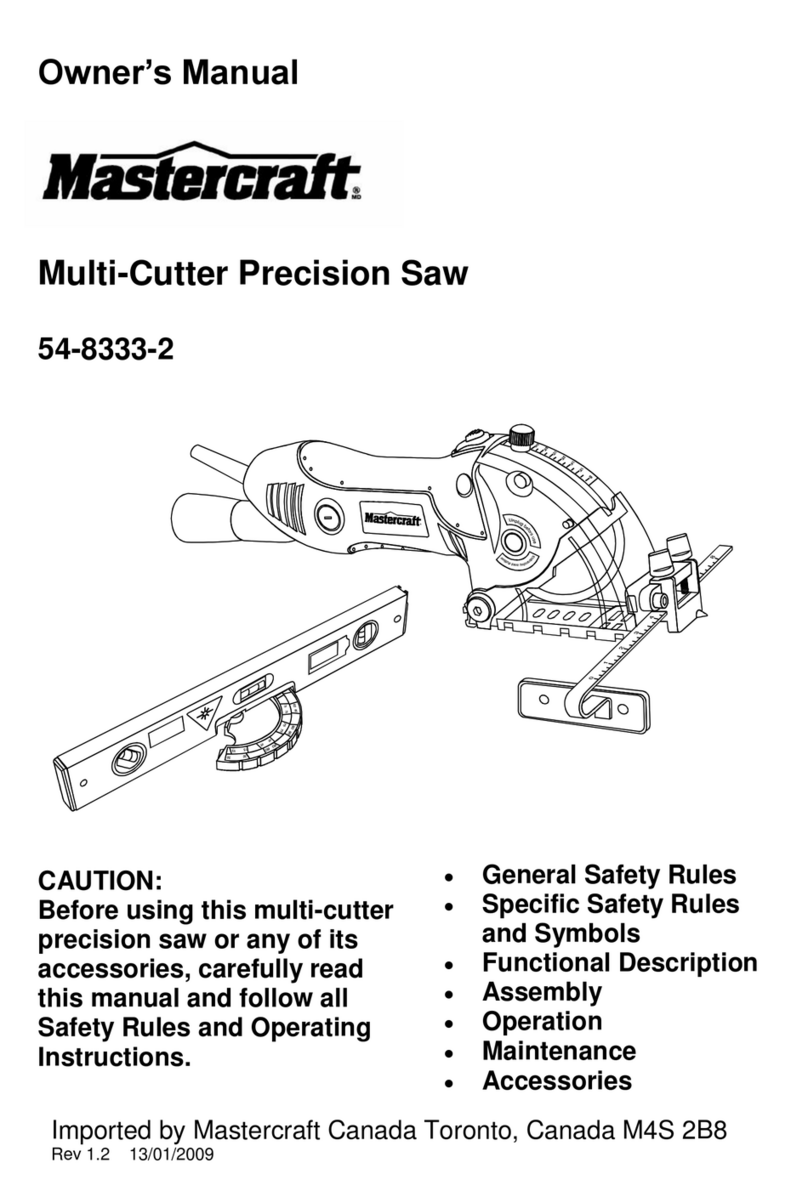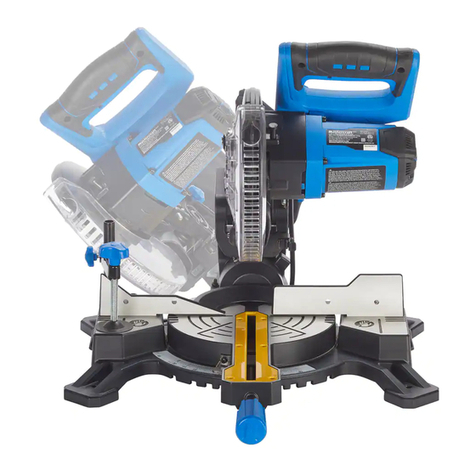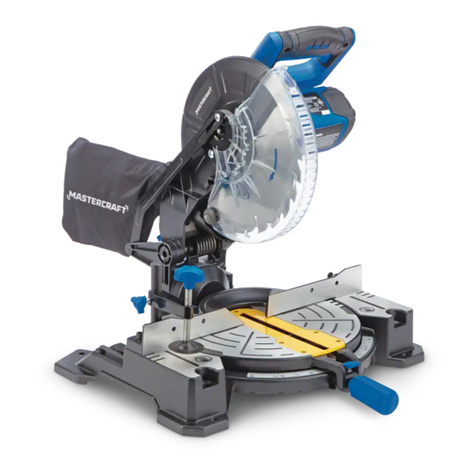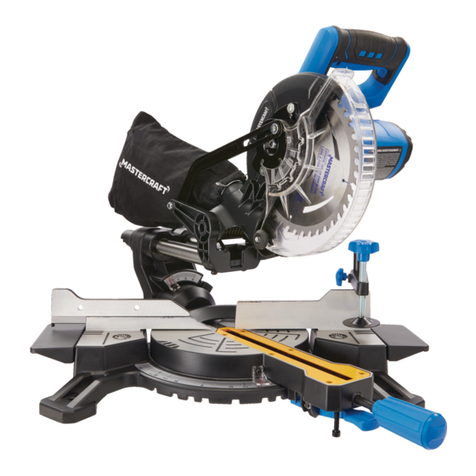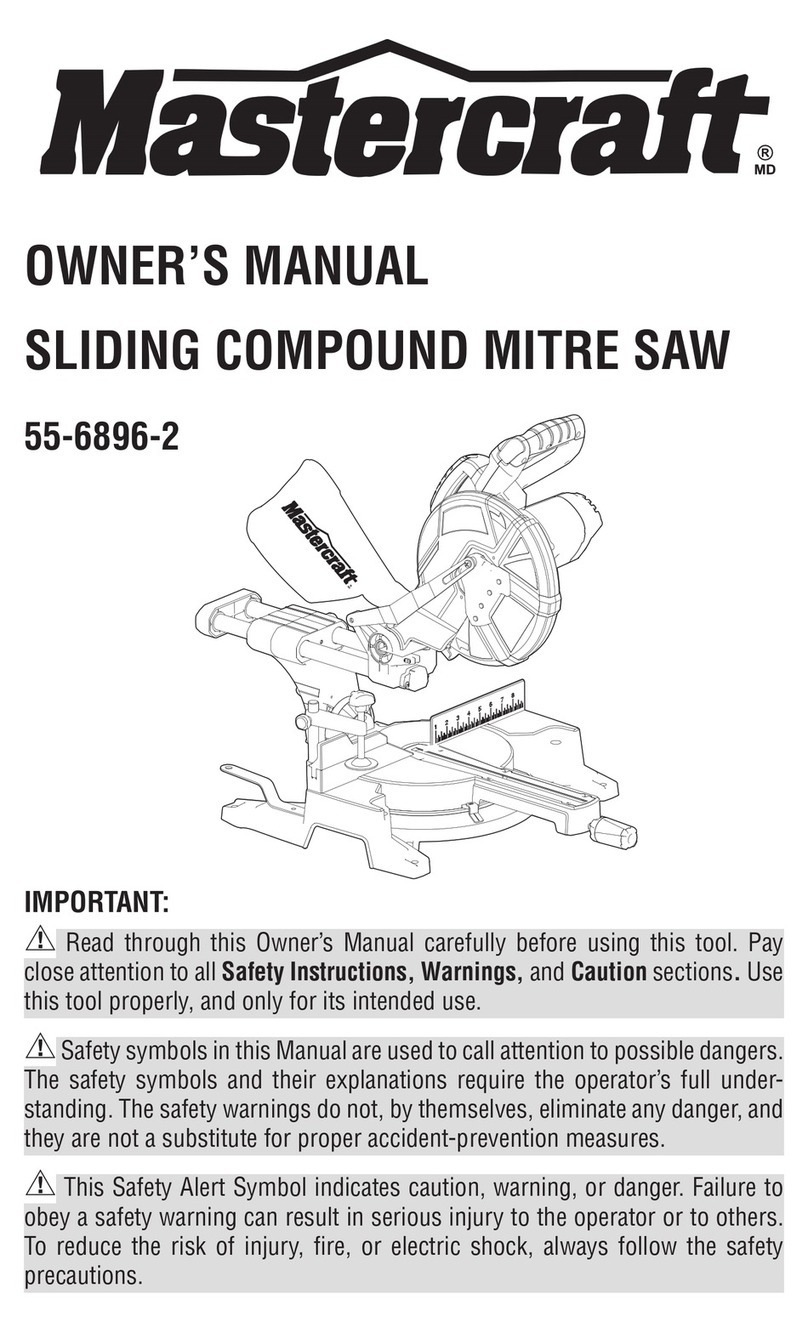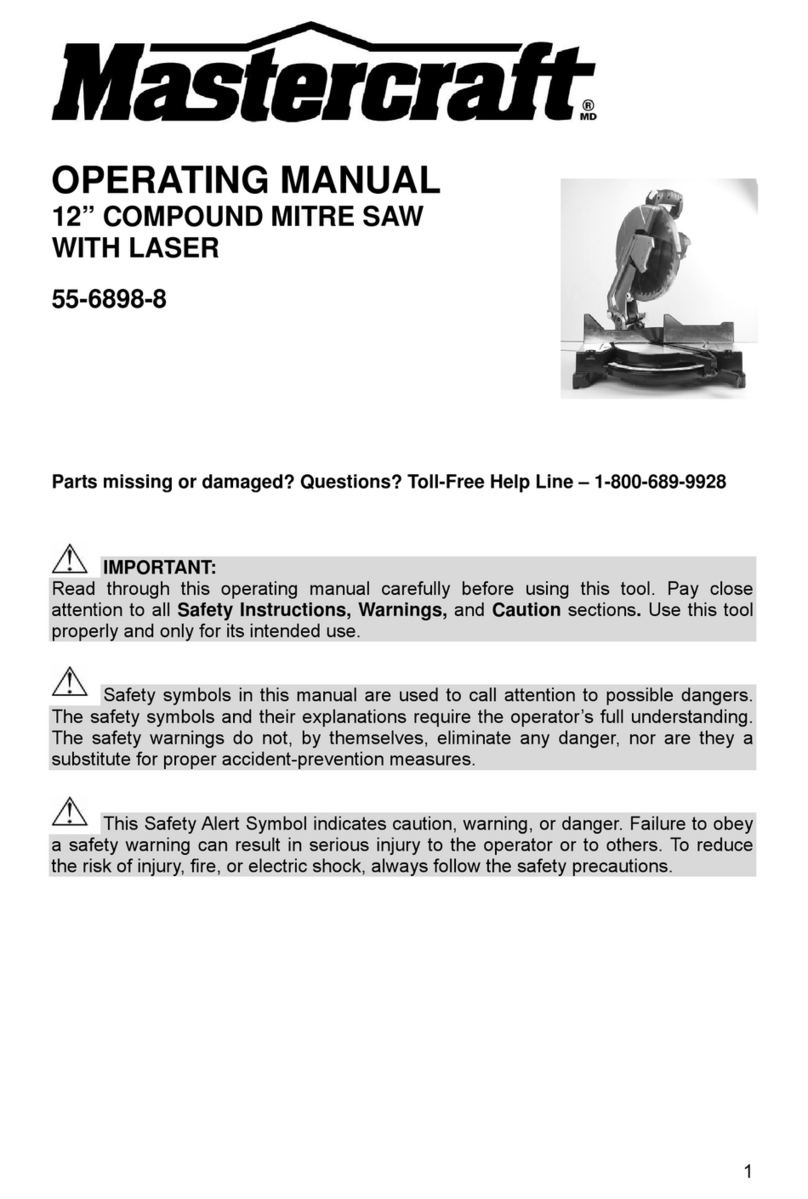
5
CAUTION: Using controls or adjustments or performing procedures other than those
specified herein may result in hazardous radiation exposure.
SPECIFIC SAFETY RULES FOR CIRCULAR SAW
WARNING: Keep your hands away from the cutting area and the blade. Keep your
second hand on the auxiliary handle or the motor housing. If both hands are holding the saw,
they cannot be cut by the blade.
•Keep your body positioned to either side of the saw blade, but not in line with the
saw blade. KICKBACK could cause the saw to jump backwards.
•Do not reach underneath the work. The guard cannot protect you from the blade
below the work.
•Check the lower guard for proper closing before each use. Do not operate the saw
if the lower guard does not move freely and close instantly. Never clamp or tie the
lower guard in the open position. If the saw is accidentally dropped, the lower guard
may be bent. Raise the lower guard with the retracting handle, and make sure it moves
freely and does not touch the blade or any other part in all angles and cutting depths.
•Check the operation and condition of the lower guard spring. If the guard and the
spring are not operating properly, they must be serviced before use. The lower
guard may operate sluggishly due to damaged parts, gummy deposits, or a buildup of
debris.
•The lower guard should only be retracted manually for special cuts, such as
“pocket cuts” and “compound cuts”. Raise the lower guard by retracting the
handle. As soon as the blade enters the material, the lower guard must be released.
The lower guard should operate automatically for all other sawing operations.
•Always verify that the lower guard is covering the blade before placing the saw
down on a bench or the floor. An unprotected coasting blade will cause the saw to
walk backward, cutting whatever is in its path. Be aware of the time it takes for the blade
to stop after the trigger is released.
•NEVER hold the piece that is being cut in your hands or across your leg. It is
important to support the work properly in order to minimize body exposure, blade binding,
or loss of control.
•Hold the tool by the insulated gripping surfaces when performing an operation
where the cutting tool may contact hidden wiring or its own cord. Contact with a
“live” wire will also make exposed metal parts of the tool “live”, and shock the operator.
•When ripping, always use a rip fence or a straight edge guide. This improves the
accuracy of the cut, and reduces the chance of blade binding.
•Always use blades that have the correct size and shape arbor holes (diamond vs.
round). Blades that do not match the mounting hardware of the saw will run eccentrically,
which may cause loss of control.
•Never use damaged or incorrect blade washers or bolts. The blade washers and
bolts were designed specifically for your saw for optimum performance and safety of
operation.
•Maintain a firm grip on the saw with both hands, and position your body and arm
to allow you to resist KICKBACK forces. KICKBACK forces can be controlled by the
operator if proper precautions are taken.
•If the blade is binding, or if you must interrupt a cut for any reason, release the
trigger and hold the saw motionless, with the blade in the material, until the blade
